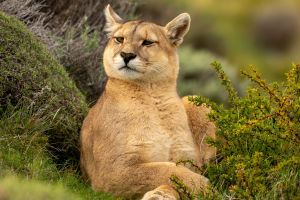Have you ever wondered whether all the news about endangered animals has a happy side? While much attention is given to species in decline, there are countless uplifting stories of recovery thanks to dedicated conservation efforts.
From the brink of extinction to thriving once again, animals across the globe are making comebacks. These success stories remind us that, with the right action, humans can reverse damage and restore balance to nature.
The California Condor: A Flight Back from Extinction
One of the most inspiring conservation stories comes from the skies of North America. In the 1980s, only 27 California condors remained in the wild. These majestic birds were disappearing rapidly due to lead poisoning, habitat loss, and hunting.
In a bold and controversial move, scientists captured all remaining condors for a captive breeding program. Thanks to decades of hard work, these birds have been successfully reintroduced into their native habitats. As of 2024, more than 500 California condors exist, with over half living freely in the wild. This incredible turnaround proves that even the most dire situations can be reversed with persistence and science.
Sea Otters: Restoring Balance to Marine Ecosystems
Sea otters once ranged widely along the Pacific coasts of North America and Asia, but they were hunted to near extinction for their thick fur. By the early 1900s, their numbers had dropped drastically.
Legal protections, habitat monitoring, and a ban on commercial hunting helped sea otters make a strong comeback. More than just a cute animal, the return of sea otters has had major ecological benefits. By preying on sea urchins, otters have helped restore kelp forests, which are essential for marine biodiversity. This success story highlights the importance of every species in maintaining ecosystem health.
The Arabian Oryx: Back from the Desert's Edge
The Arabian oryx, a desert antelope with striking horns, was once declared extinct in the wild by the early 1970s due to overhunting and habitat degradation. But a remarkable rescue effort followed.
Conservationists began a breeding program using the last few individuals in captivity. Over time, they reintroduced herds into protected desert reserves across Saudi Arabia, Oman, and the UAE. The population has now grown to over 1,000 in the wild, leading to the species being downgraded to "vulnerable." It was the first time a species classified as extinct in the wild successfully returned to its natural environment.
The Bald Eagle: A National Comeback
The bald eagle, the national bird of the United States, was once in sharp decline due to hunting and the widespread use of the pesticide DDT. In 1963, only 417 breeding pairs were recorded.
Following strong environmental laws, including the banning of DDT and the Endangered Species Act, eagle numbers soared. By 2007, the bald eagle was officially removed from the endangered species list. Today, the species is thriving across the U.S. This story serves as a reminder that changes in policy and public awareness can lead to lasting recovery.
Mountain Gorillas: Protected by People and Passion
Mountain gorillas, living in the forests of Central Africa, have long faced threats from poaching, disease, and deforestation. In the 1980s, only about 250 were known to exist.
Thanks to coordinated conservation efforts by governments, NGOs, and local communities, including eco-tourism initiatives and strict anti-poaching laws, the population has steadily increased. Recent surveys estimate there are over 1,000 mountain gorillas today. What makes this story powerful is the strong involvement of local people in preserving their natural heritage.
What Makes a Conservation Effort Successful?
Behind each success story are common elements:
• Long-term planning and funding
• Cooperation between governments, scientists, and communities
• Strong legal protection and enforcement
• Public education and awareness
• Habitat restoration and species monitoring
Experts emphasize that conservation isn't a one-time fix. According to a 2023 report by the International Union for Conservation of Nature (IUCN), sustained investment in conservation programs over at least 10 years is crucial for lasting impact.
The Role of Everyday People
While large organizations and governments play vital roles, ordinary individuals can also make a difference:
• Supporting sustainable products
• Donating to conservation charities
• Reducing single-use plastics
• Participating in local cleanups or citizen science projects
• Sharing positive conservation stories to inspire others
Every action counts. Just as people have caused environmental harm, we also have the power to repair it.
Looking to the Future
The success of these conservation efforts is a beacon of hope in the face of climate change and biodiversity loss. While challenges remain, these stories prove that with determination, collaboration, and science, we can protect the world's animals for future generations.
Conclusion: Be Part of the Change
It's easy to feel overwhelmed by environmental news, but real progress is happening — one species at a time. From the soaring California condor to the resilient sea otter, these animals have been given a second chance, thanks to human dedication and care.
Have you ever supported a wildlife cause or visited a sanctuary? What story of animal recovery has inspired you the most? Share your thoughts and keep the conversation going. Together, we can write the next chapter in animal conservation — and make it a story of hope.


